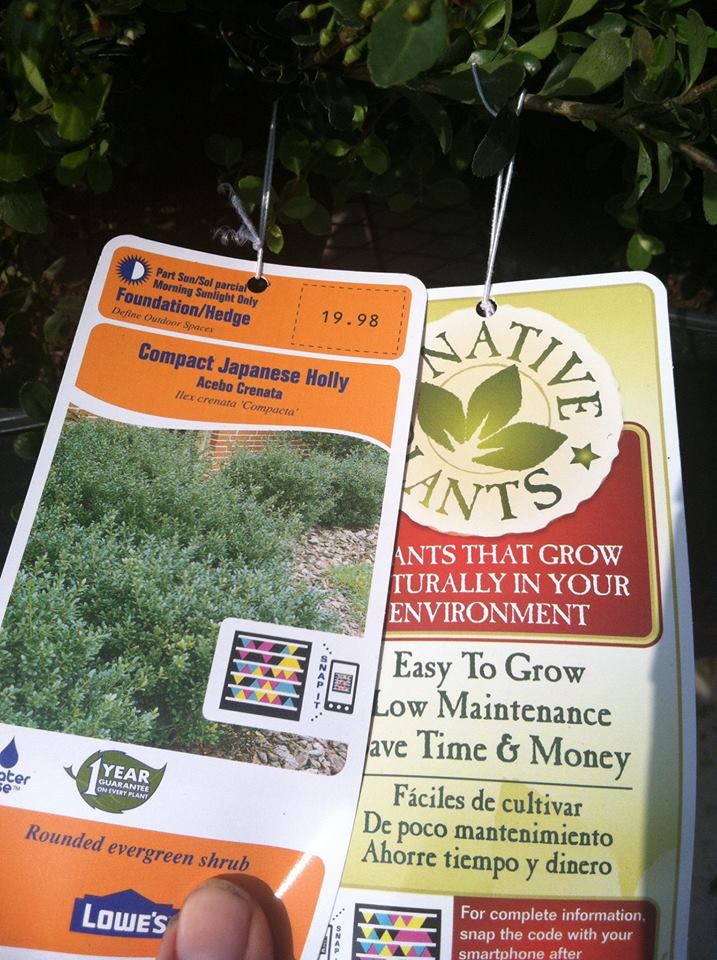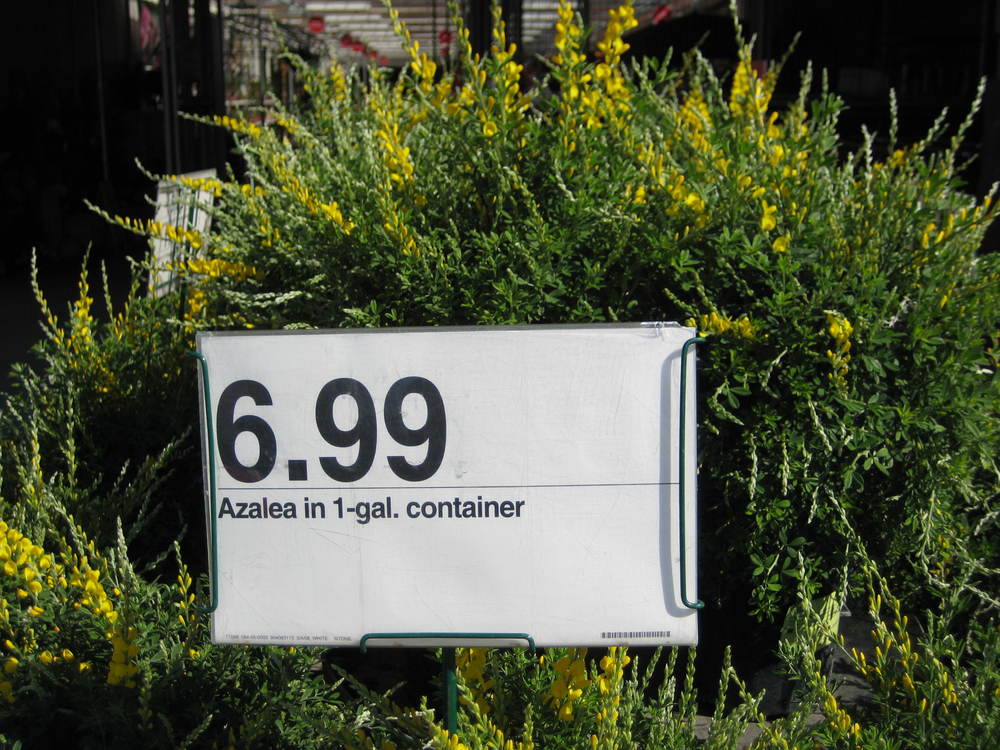 According to Lowe's Japanese Holly is a native plant. They don't tell you where it's native, but why should that matter? Studies show if you put "native" on the tag people will buy more. The tag also tells us it's "easy to grow, low maintenance, and will save you time and money." What does "Plants that grow naturally in your environment" mean? Which plants grow "unnaturally" in my yard? What does "naturally" mean anyway?
According to Lowe's Japanese Holly is a native plant. They don't tell you where it's native, but why should that matter? Studies show if you put "native" on the tag people will buy more. The tag also tells us it's "easy to grow, low maintenance, and will save you time and money." What does "Plants that grow naturally in your environment" mean? Which plants grow "unnaturally" in my yard? What does "naturally" mean anyway?
What makes a native plant "easy to grow"? I know many people who have tried to grow native plants only to fail. Just because its native doesn't mean it's easy to grow, or that it will save you money, or time. Giving Lowe's the benefit of the doubt, we can imagine some worker has simply put the wrong "native plant" tag on the Japanese Holly. I still don't understand why being a native plant makes it easier to grow?
Some in my trade will be excited to see the QR codes on the tags. We are told that you need QR codes on tags so people can scan them with their smart phones. Then the customer can be forwarded to the Lowe's website and more information on this native shrub. Maybe the QR code takes you to a real description of the plant and the disclaimer that it was all a joke. Of course the horticulturists at Lowe's know what they are talking about. "We wanted to see if you noticed."
This is the lowest form of horticulture. The mass merchants look at plants simply as commodities. Japanese Holly is a "rounded evergreen shrub" that may or may not be native. Somehow they grow naturally, unlike the other plants in your yard, which I assume are growing "unnaturally". They are according to the tag a "foundation" shrub, whatever that means. Most important they carry the "one year warranty", which is odd since they are suppose to be so "easy to grow".

